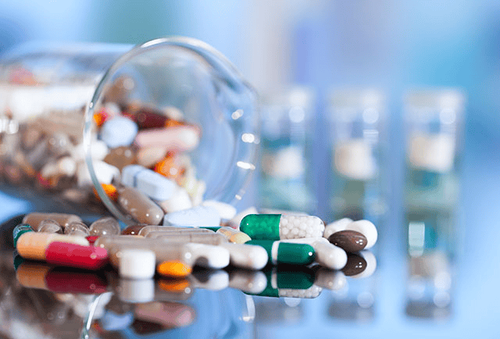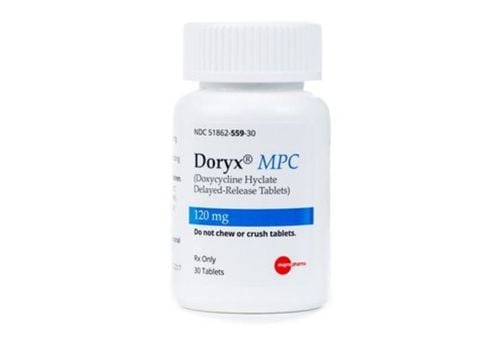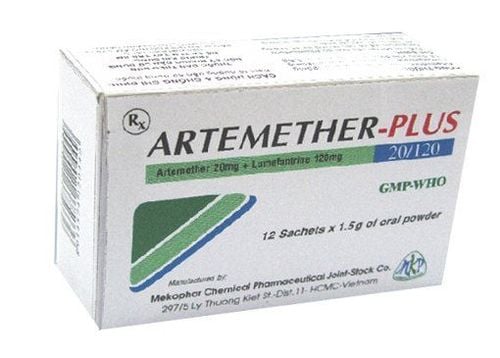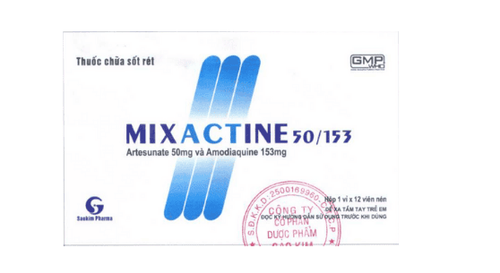This is an automatically translated article.
The article was professionally consulted with Master, Doctor Nguyen Tung Hoanh- Department of Resuscitation - Emergency - Vinmec Nha Trang International General Hospital.Malaria is a fairly common disease in our country, but many people still do not understand this disease as well as how to treat it, making it more serious.
1. How dangerous is malaria?
Malaria is one of the most common infectious diseases and a very serious public health problem. The disease is caused by the Plasmodium parasite, which is passed from person to person when they are bitten by a mosquito.The disease is common in tropical and subtropical regions of the Americas, Asia and Africa. Each year, more than 500 million people are infected with the disease, the number of deaths is up to 3 million - the majority of them are children in sub-Saharan Africa and South Africa. Malaria is often associated with poverty, backwardness and is a major obstacle to economic development.
Everyone can get malaria. Immunity to malaria is incomplete and short, so re-infection is possible. There is no cross-immunity, so a person can be infected with two or three types of malaria parasites simultaneously.
With proper treatment, people with malaria can usually make a full recovery. However, severe malaria can progress extremely quickly and cause death within hours or days. For most severe cases requiring special care and treatment, the mortality rate can be as high as 20%.
Malaria in children causes blood loss and brain damage directly due to cerebral malaria. Children who survive cerebral malaria are at risk for neurological and cognitive impairment, behavioral disturbances, and seizures.
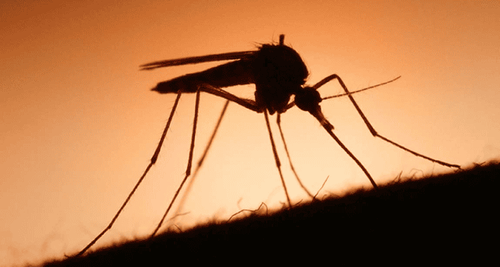
Bệnh sốt rét lây truyền từ người này sang người khác khi những người này bị muỗi đốt
2. Infectious forms of the malaria parasite
2.1 Generalized malaria Primary fever: The first fever is often atypical, high fever continuous for several days. Subsequent fevers are more typical.Typical fever: A typical malaria attack goes through 3 stages in turn:
Chilling stage: Whole body shivering, pale lips, halo eyes, goosebumps. The chilling phase is about 30 minutes - 2 hours.
Stage of hot fever: Chills decrease, the patient feels warmer, body temperature can reach 400C - 410C, red face, hot dry skin, rapid pulse, rapid breathing, headache, thirst, maybe a little pain in the area. liver and spleen. The hot fever phase is about 1-3 hours.
Sweating phase: Body temperature drops rapidly, sweating, thirst, headache relief, pulse returns to normal, patient feels good and falls asleep.
Febrile pyrexia: Fever is not severe, only chills, fever spikes, lasting about 1-2 hours. This form of fever is common in patients who have been infected with malaria for many years.
2.2 Cold parasitic form (healthy people carry the infection) Blood test has parasites but no fever, still living and working normally. This case is common in cross-sectional studies in malaria endemic areas.
The cycle of fever varies according to the type of parasite. P. falciparum fever: daily fever, severe fever nature, or cause severe malaria and death if not treated promptly. Fever due to P.vivax: usually fever every other day (1 day after fever). Fever caused by P.malariae and P.ovale: Fever every other day or fever every 3 days.
2.3 Cerebral form This is the body that accounts for about 80-95% of complicated malaria. Prominent premalignant signs are disturbances of consciousness (lethargy or restlessness, delirium, slurred speech), persistent high fever, severe insomnia, severe headache, excessive vomiting or diarrhea, physical condition. heavy.
Psychiatric syndrome: sudden or gradual coma, deepening coma. Epileptic seizures. Sphincter disorders, dilated pupils. Other signs: respiratory disorders or respiratory failure due to cerebral edema, sputum stagnation. Blood pressure decreases due to dehydration, or increases due to cerebral edema. Vomiting and diarrhea. There may be renal failure, oligouria or anuria, high blood urea nitrogen, hemoglobinuria due to massive hemolysis. Mortality rate from cerebral malaria is from 20 to 50%.
2.4 Hemoglobinuria is a severe form due to massive hemolysis, cardiovascular collapse, and kidney failure. Severe fever, dry vomiting or yellow discharge, back pain. Jaundice, mucous membranes due to hemolysis. Hemoglobinuria, red-brown urine later turns coffee color or thick water color, urine volume gradually decreases and anuria. Anemia and acute hypoxia. Red blood cells and hemoglobin decreased sharply.
There are also other types such as:
Cold body: Cold body, low blood pressure, pale skin, sweating, headache. Pulmonary form: Shortness of breath, rapid breathing, cyanosis, may spit out pink foam. The bottom of the lung has many moist rales, snoring rales. Hepatobiliary system: Jaundice, yellow eyes, nausea and vomiting. Yellow stools, yellow urine with a lot of bile salts. Comatose. Digestive system: Abdominal pain, vomiting, acute diarrhea, hypothermia.
3. How is malaria treated?
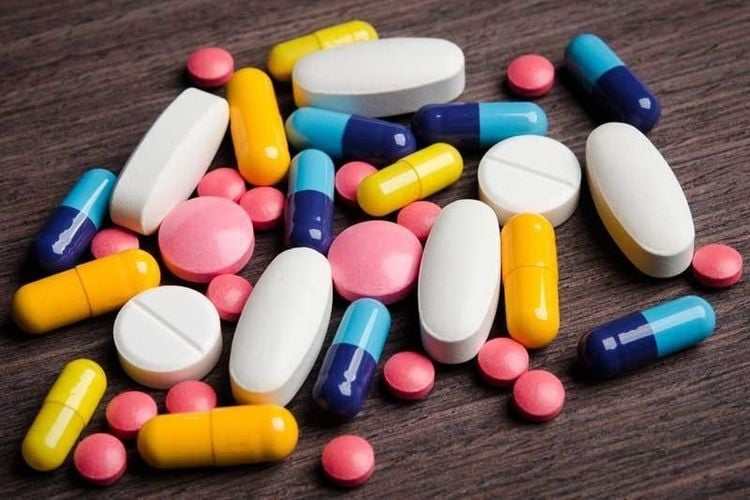
Để điều trị cơn sốt rét trước tiên chúng ta cần điều trị cắt cơn sốt
For patients infected with Plasmodium vivax:
Chloroquine total dose 25mg/kg body weight divided into 3 treatment days: day 1 and day 2 take 10mg/kg body weight, day 3 take 5 mg/kg body weight or Or artesunate total dose 16 mg/kg body weight divided into 7 days of treatment: Day 1 take 4 mg/kg body weight, from day 2 to day 7 take 2 mg/kg body weight (do not use artesunate for pregnant women in the first 3 months except in cases of severe malaria) Or Quinine sulphate at a dose of 30 mg/kg/24 hours divided into 3 times a day, treat for 7 days. For patients infected with Plasmodium falciparum:
Combination artemisinin derivatives: Arterakine or CV artecan tablets (40mg dihydroartemisinin + 320mg piperaquine phosphate)
Dosage:
Under 3 years old: 1 tablet on the first day, two days after each day 1/2 tablet. From 3 to under 8 years old: 2 tablets on the first day, 1 tablet every other day after two days. From 8 to under 15 years old: 3 tablets on the first day, 1.5 tablets each day after two days. From 15 years old and up: 4 tablets on the first day, 2 tablets after each day. Do not use for pregnant women in the first 3 months. Anti-relapse and anti-spread:
Primaquine 13.2mg tablet contains 7.5mg base
Dosage: 0.5mg base/kg body weight/ 24 hours
With Plasmodium falciparum treat 1 day With Plasmodium vivax treat 10 Do not use primaquine for children under 3 years of age, pregnant women, people with liver disease and people with G6PD deficiency. However, for the treatment of severe malaria, Artesunate intravenously is a must.
With the dose: 2.4 mg/kg body weight in the first hour, 24 hours after the booster injection, 1.2 mg/kg body weight, after 24 hours. Then inject 1 dose of 1.2 mg/kg body weight per day until the patient can drink, then switch to oral medicine for 7 days.
Pay attention to the treatment of symptoms and complications depending on the complications of malaria.
4. Malaria Prevention
Propaganda and education on malaria prevention, when having a fever, the patient needs to go to a medical facility for examination and treatment. Sleep under a mosquito net, even at home, in the fields or in the forest. Prevention of disease-transmitting mosquitoes is still considered the most effective measure: Kill mosquitoes by spraying the inside of walls and impregnating the nets with insecticides once a year before the rainy season Apply mosquito repellant cream Clear the bushes, clear the drains around the house, make the house far from the forest and water sources, wear long clothes at night Limit the larvae: clear the flow, remove algae and clear the water Take preventive medicine: malaria water flows In severe cases, there is a policy of taking prophylactic drugs for people entering malaria areas for a short time, pregnant women in malaria areas, and newcomers to settle in malaria areas. In our country today, because malaria has decreased sharply, so we do not take preventive medicine but only give drugs to the above subjects to self-treat when they have malaria. Safe blood transfusion, especially for people with a history of malaria or who have lived in malarial areas. Vinmec International General Hospital is one of the hospitals that not only ensures professional quality with a team of leading doctors, modern equipment and technology, but also stands out for its examination and consulting services. and comprehensive, professional medical treatment; civilized, polite, safe and sterile medical examination and treatment space. Customers when choosing to perform tests here can be completely assured of the accuracy of test results.Please dial HOTLINE for more information or register for an appointment HERE. Download MyVinmec app to make appointments faster and to manage your bookings easily.
Articles refer to the source of the Ministry of Health



